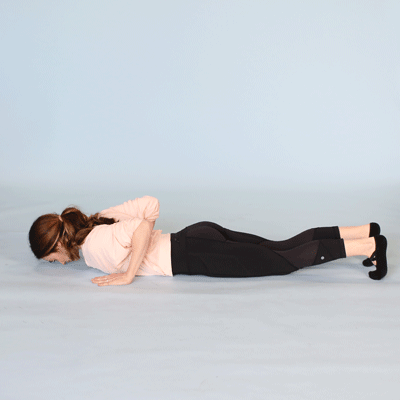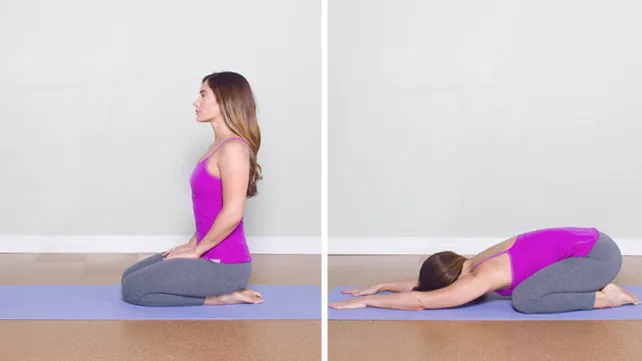Contents
- 1 13 Best Exercises For Constipation
- 2 When To Exercise?
- 3 Frequently Asked Questions
- 3.1 When should I exercise for constipation relief?
- 3.2 Should I consult a healthcare provider before starting a new exercise regimen?
- 3.3 What are some relaxation exercises that can help alleviate constipation symptoms?
- 3.4 What are some lifestyle changes I can make to maintain regular bowel movements?
13 Best Exercises For Constipation
Regular exercise can significantly enhance digestive health, stimulating the natural movements of the digestive tract and improving overall bowel function. Here are 13 exercises, each detailed with their unique benefits, that are particularly effective for relieving constipation.
1. Walking:
Walking is one of the most accessible and gentle forms of exercise, suitable for almost everyone. A brisk 30-minute walk daily can greatly improve your digestive system’s efficiency. This low-impact exercise doesn’t stress the body but increases heart rate and blood circulation, which in turn stimulates the muscles in the intestines and colon. This stimulation helps to move stools through the digestive tract more smoothly, reducing the time waste spends in the colon and thus, the likelihood of constipation.
2. Jogging:
Jogging, a step up from walking in terms of intensity, offers enhanced benefits for combating constipation. The rhythmic, repetitive motion of jogging works to massage the abdominal organs, including the intestines and colon, thereby improving the speed and efficiency of digestion and waste elimination. Regular jogging sessions contribute not only to the reduction of constipation but also to the overall toning and health of the digestive tract muscles.
3. Cycling:
Cycling, whether outdoors or on a stationary bike, is excellent for engaging and strengthening the core muscles, including those around the abdomen and lower back. Strengthening these muscles helps in improving posture and promoting more efficient bowel movements. The aerobic nature of cycling also boosts heart rate and blood flow, which in turn can help to stimulate the contractions of the bowel wall (peristalsis), aiding in easier stool passage.
4. Swimming:
Swimming and water aerobics are particularly beneficial for those seeking a low-impact, full-body workout that also aids in relieving constipation. The buoyancy of water reduces strain on the body, making it easier to perform a wide range of movements that can help stimulate digestion. Additionally, the resistance provided by water helps in strengthening the abdominal and pelvic muscles, further enhancing digestive efficiency.
5. Yoga:
Yoga is renowned for its ability to improve flexibility, reduce stress, and enhance digestive function. Specific poses like the Wind-Relieving Pose (Pavanamuktasana), Child’s Pose (Balasana), and Supine Twist (Supta Matsyendrasana) are particularly effective for massaging the internal organs, including the digestive tract, thereby promoting the elimination of waste and relieving symptoms of constipation.

6. Pilates:
Pilates focuses on strengthening the core, which includes the muscles used in bowel movements. Regular Pilates practice can improve core strength and stability, which in turn supports more efficient bowel movements. The emphasis on precise movements and breath control also helps in stimulating the digestive system and encouraging the passage of stool.
7. Deep Squats:
Deep squats mimic the natural squatting position that is considered optimal for bowel movements. This exercise helps in reducing the strain during bowel movements by aligning the rectum in a way that facilitates easier passage of stool. Performing deep squats regularly can strengthen the pelvic and abdominal muscles, further supporting digestive health.
8. Leg Lifts:
Leg lifts are a simple yet effective exercise for engaging the core and lower abdominal muscles, areas crucial for supporting digestive processes. By lying on your back and lifting your legs, you create internal abdominal pressure that can help stimulate the colon. This exercise not only aids in relieving constipation but also strengthens the abdominal muscles, contributing to improved overall digestion.
9. Knees to Chest Pose (Apanasana):
This gentle yoga pose involves lying on your back and bringing your knees to your chest, which can help massage the abdominal organs, stimulate the intestines, and promote movement of stool through the digestive system. It’s a calming pose that also helps to relieve stress and tension, which can be contributing factors to constipation.
10. Lunges:
Lunges are dynamic exercises that involve a significant range of motion, engaging the core, and stimulating the abdominal muscles. This engagement helps in promoting the movement of food and waste through the digestive tract. Additionally, lunges can improve flexibility and strength in the lower body, which supports better posture and, consequently, a healthier digestive system.
11. Twist Exercises:
Twisting exercises, whether performed standing or seated, can have a profound massaging effect on the internal organs, including the intestines. This massaging action helps in stimulating digestion and encouraging the movement of stools through the colon. These exercises also aid in detoxifying the body and improving the circulation and flow of nutrients and waste.
12. Jumping Jacks:
Jumping jacks, a form of plyometric exercise, help in temporarily increasing heart rate and blood flow, including to the digestive organs. This increased circulation can stimulate bowel activity, helping to alleviate constipation. Additionally, the repetitive jumping movement helps to shake the digestive tract, potentially dislodging stuck stools.
13. Pelvic Floor Exercises:
Strengthening the pelvic floor muscles through exercises like Kegels can improve bowel control and function. A strong pelvic floor supports the rectum and the muscles used during bowel movements, making it easier to pass stool. Regularly performing pelvic floor exercises can help prevent constipation by enhancing the muscle coordination needed for regular bowel movements.
When To Exercise?
When it comes to relieving constipation through exercise, timing can be important. Here are a few factors to consider when deciding when to incorporate exercise into your routine:

- Timing after meals: It’s generally recommended to wait at least one to two hours after a meal before engaging in exercise. This allows your body to digest the food properly and prevents discomfort during your workout.
- Consistency: Establishing a regular exercise routine can be beneficial for maintaining healthy bowel movements. Aim for at least 150 minutes of moderate-intensity aerobic exercise or 75 minutes of vigorous-intensity exercise per week, spread out over several days.
- Listen to your body: Pay attention to your body’s signals and exercise when you feel energized and comfortable. If you’re feeling fatigued or have a stomachache, it may be best to postpone your workout until you’re feeling better.
- Prevent exercise-induced constipation: Some individuals may experience constipation as a result of certain types of exercise, such as high-impact activities or workouts that involve prolonged sitting or lying down. If you’re prone to exercise-induced constipation, consider incorporating exercises that involve movement and engage the abdominal muscles.
Frequently Asked Questions
When should I exercise for constipation relief?
Wait at least one to two hours after a meal before exercising. Establish a regular exercise routine and listen to your body’s signals. Consider exercises that stimulate the abdominal muscles to help relieve constipation.
Should I consult a healthcare provider before starting a new exercise regimen?
Yes, it’s advisable to consult with a healthcare provider before starting a new exercise regimen, especially if you have underlying health conditions.
What are some relaxation exercises that can help alleviate constipation symptoms?
Deep breathing, meditation, and progressive muscle relaxation exercises can help reduce stress levels and indirectly alleviate constipation symptoms.
What are some lifestyle changes I can make to maintain regular bowel movements?
Adopt a healthy lifestyle that includes regular exercise, staying hydrated, eating a balanced diet rich in fiber, and responding to the urge to poop for maintaining regular bowel movements and optimizing digestive system health.

Hello, I’m Ravindra. Over the years, I’ve immersed myself deeply into the world of fitness and health, transforming both my body and mind. Writing has allowed me to share my journey, insights, and expertise with those just starting out and seasoned fitness enthusiasts alike. Beyond just routines and diets, I believe in inspiring others to adopt a holistic approach to well-being.

